What is 5GC deployment?
Refer to 3GPP, SA mode and NSA mode are two major kinds of 5GC (5G Core Network) deployment.
· SA (Standalone) mode: One category core connects to one category of radio infrastructure;
· NSA (Non-Standalone) mode: One category core connects to two categories of radio infrastructures.
As for the specific structure, you could see from the below diagram:
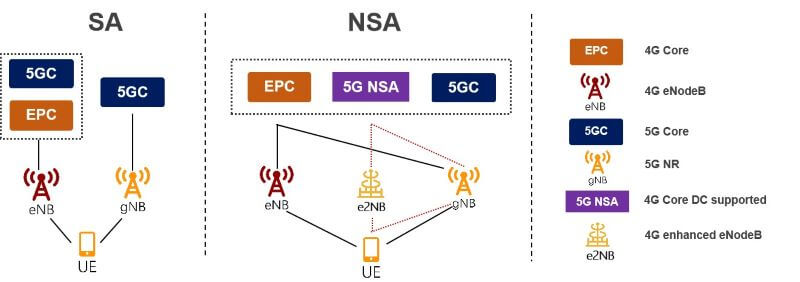
The characteristics of 5GC
1. Cloud-native network
Constructing cloud-native network is the basis of developing effective and smooth 5GC. It can also maximize the value of the 5G technology.
Nowadays, The cloudification of core network has already succeeded in commercial launch. To meet the specific needs of various application scenarios, the conceptual design of cloud-native network takes below three aspects into consideration:
a) Stateless Architecture
To construct a more reliable and flexible network, stateless architecture is the optimal option.
b) SBA (Service-based Architecture)
Refer to 3GPP, the introduction of SBA enables rapid deployment for specific network function based on various business.
c) Container
As a lightweight version of virtualization technology, container has advantages in the aspects of resource efficiency, portability, function and implementation. While virtual machine has strengths on safety and resource isolation.
2. CUPS
Emerging business such as AR/VR requires higher standard of network latency, bandwidth and safety. With the distributed architecture of CUPS, user plane is deployed to edged area to lower network latency and enhance user experience. What’s more, disposing data in local can also guarantee the data safety of enterprise, which can make operators more qualified to enter the enterprise market.
The architecture of CUPS has already been implemented in 4G network, which lays the foundation of constructing 5G network in distributed architecture.
Based on the distributed architecture of CUPS, 5GC can unify the control plane to manage the distributed user planes. Integrated with MEC (Multi-access edge computing), 5GC also introduces dynamic shunt, APP coordination and so on competences and technologies to ensure the optimal user experience and commercial launch.
3. 5G full service access network
With the unified interface and authentication, 5GC supports all kinds of ways of accessing such as Wi-Fi access, fixed access, industrial access and so on, which can eliminate disperse terminals for operators, simplify the network operation and innovate commercial mode. In the near future, 5GC may also support TSN (Time Sensitive Networking) industrial Internet access, satellite access and UAV (Unmanned Aerial Vehicle) access.
4. 5G Network slicing
As the critical native competence of 5G, network slicing can enhance the efficiency of telecommunication network and lower the cost of constructing and operating network.
5G network slicing has below four typical characteristics:
a) End-to-end SLA Ensurance: Composed of core network, radio, transmission and other domains, 5G network slicing is available to realize coordination among several domains.
b) Business isolation: Constructing various network entities for applications, network slicing protects the business of diverse slicing from disturbance with isolated private network.
c) Customized function and dynamic deployment: In the face of diverse network requirements from different industries, 5G network can provide customized function for each applications. Meanwhile, the distributed architecture of 5G network can be deployed to specific location based on relevant business requirement to meet various needs of business latency.
d) Automatic and multi-tanency operation: Automation is the aim of developing network. To achieve this goal, manual, semi-automatic and full-automatic procedure of operating network slicing is necessary. With the gradual development of network planning, the network will become simplified and flatten, and finally become automatic.
IPLOOK 5GC Deployment
Therefore, to fully exert the characteristics of 5GC, we should think highly of 5GC deployment.
IPLOOK can support seven available options of 5GC deployment with various configuration according to 3GPP mentioned in the below illustration.
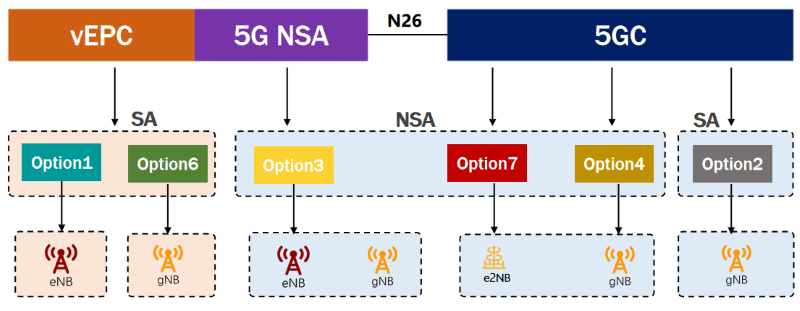
Actually, there are several options for diverse application scenarios according to 3GPP standard including four main categories: Option 2, Option 3/3a/3x, Option 4/4a, Option7/7a/7x.
· 5G deployment scenario—Option 2
As an option of standalone architecture, Option 2 represents gNodeB deployed in the network architecture and connected to 5GC.
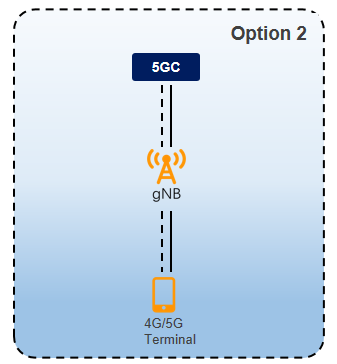
· 5G deployment scenario—Option 3
Option3/3a/3x
Under the circumstance of current 4G network, the core network is still EPC with the rapid deployment of 5G NR, and 5G NR supports S1/X2 interface to connect EPC and eNB.
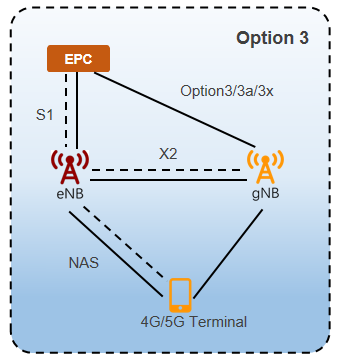
· 5G deployment scenario—Option 4
Option4/4a
5GC and 5G NR are deployed in the network, and the eNB is enhanced to e2NB so as to increase
the N2/N3/Xn interface.
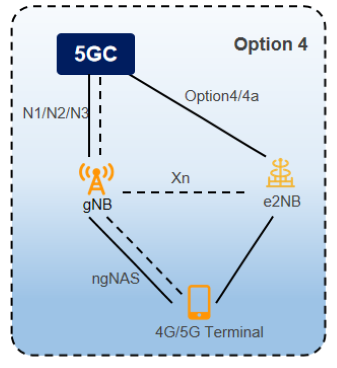
· 5G deployment scenario—Option 7
Option7/7a/7X
5GC and 4G e2NB (enhanced eNodeB ) are deployed in the network, with 5G NR as auxiliary.
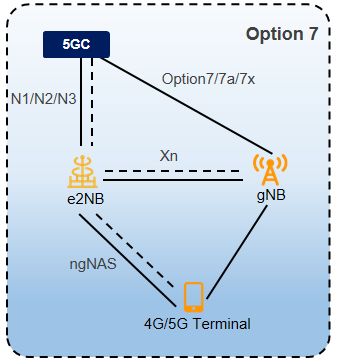
Having many commercial partners and clients from all over the world, IPLOOK has accumulated professional experiences of constructing customized 5GC network for various requirements.
Contact us for more information!

